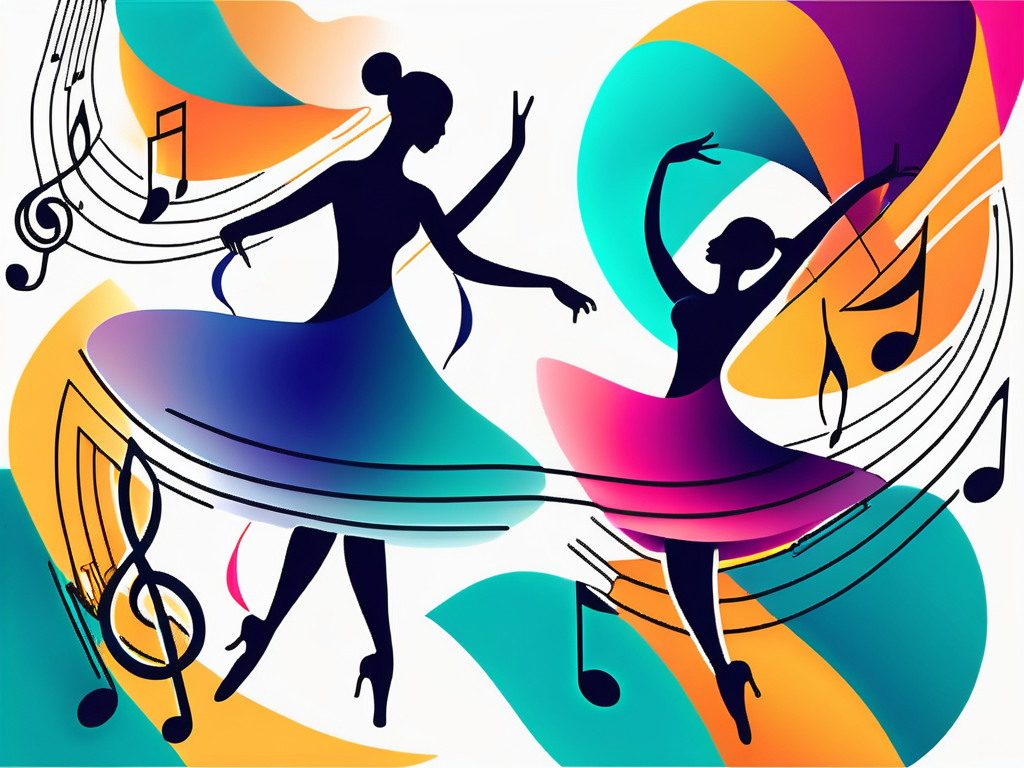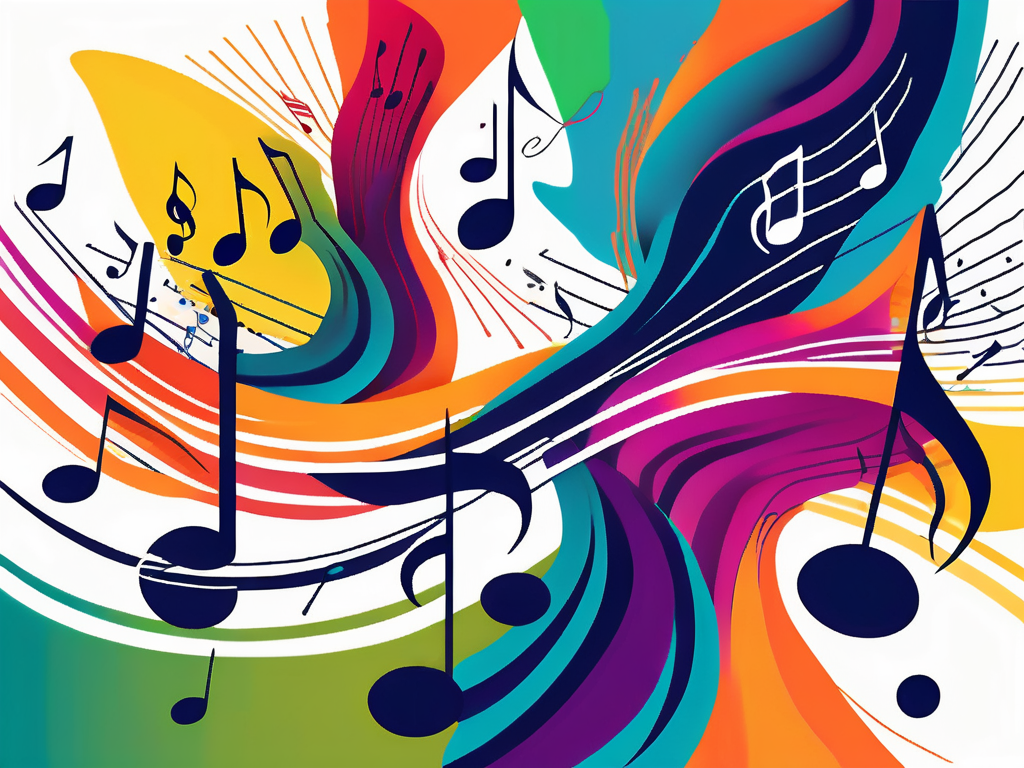A Guide to Creative Movement
Dance has long been recognized as a powerful form of self-expression. Through movement, dancers are able to convey a range of emotions, thoughts, and stories. In this guide to creative movement, we will explore the various aspects of dance as a means of self-expression and provide tips for cultivating your own unique dance style.
Understanding the Power of Dance
Before delving into the practical aspects of creative movement, it is important to understand the profound impact that dance can have on individuals and communities. Dance is more than just a series of steps; it is a form of communication that transcends language barriers and connects people on a deeper level.

Delving deeper into the world of dance, we find that it not only serves as a means of expression but also as a powerful tool for cultural preservation. Through traditional dances passed down through generations, communities are able to maintain their heritage and keep their stories alive. These dances serve as a link to the past, connecting individuals to their roots and fostering a sense of identity and belonging.
Dance as a Form of Communication
One of the key aspects of dance as a form of self-expression is its ability to communicate without words. Whether it is through movements, gestures, or facial expressions, dancers are able to convey complex emotions and ideas. The body becomes a vessel for storytelling, allowing dancers to share their experiences and connect with others in a meaningful way.
Moreover, dance has the unique ability to bridge cultural divides and foster understanding between diverse communities. By sharing their traditional dances and learning from one another, people from different backgrounds can find common ground and celebrate their differences. This exchange of movement and rhythm not only promotes cultural exchange but also promotes empathy and unity among individuals.
The Emotional Impact of Dance
Beyond its communicative power, dance also has a profound emotional impact on both dancers and viewers. The act of dancing can be cathartic, allowing individuals to release pent-up emotions and find solace in movement. For spectators, witnessing a captivating dance performance can evoke a wide range of emotions, from joy and excitement to sadness and introspection.
Furthermore, dance has been recognized for its therapeutic benefits, with movement being used as a form of healing for individuals dealing with trauma or mental health challenges. Through dance therapy, individuals can explore their emotions, build confidence, and develop a deeper connection with their bodies. This holistic approach to well-being highlights the transformative power of dance beyond its physical and artistic aspects.
The Basics of Creative Movement
Now that we have explored the transformative power of dance, let's dive into the practical aspects of creative movement. Whether you are a seasoned dancer or new to the world of dance, understanding the basics is essential for expressing yourself through movement.
Embarking on a journey of creative movement opens up a world of possibilities for self-expression and storytelling through the art of dance. It allows individuals to communicate emotions, ideas, and narratives without uttering a single word. Creative movement is a powerful form of expression that transcends language barriers and connects people on a universal level.
Exploring Different Dance Styles
One of the first steps in developing your dance expression is to explore different dance styles. From ballet to hip-hop, each style has its own unique characteristics and vocabulary of movement. By immersing yourself in various dance styles, you can discover which ones resonate with you the most and incorporate elements into your own dance expression.
Ballet, with its emphasis on poise, elegance, and precision, offers a classical foundation for dancers seeking grace and technical proficiency. In contrast, hip-hop embodies a more urban and contemporary style, focusing on rhythm, isolations, and freestyle movements. By experimenting with diverse dance styles, dancers can enrich their movement vocabulary and cultivate a versatile and dynamic approach to creative expression.
Techniques for Improving Body Awareness
A crucial aspect of dance is body awareness. The ability to fully understand and control your body allows for greater precision and expression in your movements. Techniques such as stretching, strengthening exercises, and body alignment drills can help improve your body awareness, enabling you to move with grace and confidence.
Furthermore, incorporating mindfulness practices into your dance training can deepen your connection to your body and enhance your overall performance. By focusing on breath control, spatial awareness, and mental presence, dancers can cultivate a profound sense of embodiment and artistry in their movement. Developing a heightened sense of body awareness not only refines technical skills but also fosters a deeper appreciation for the physical capabilities and expressive potential of the human form.
The Connection Between Dance and Self-Expression
While dance is a powerful form of expression on its own, understanding the connection between dance and your personal experiences is key to truly revealing your authentic self through movement.

Delving deeper into the world of dance, you'll discover that it goes beyond just physical movements set to music. Dance has the remarkable ability to transcend language and cultural barriers, allowing individuals to communicate universal emotions and experiences through the art of movement. Whether it's the graceful flow of a ballet dancer or the rhythmic beats of a hip-hop routine, each dance style offers a unique avenue for self-expression and storytelling.
Expressing Emotions Through Dance
Dance provides a unique platform for expressing emotions that may be difficult to put into words. Through movement, you can channel feelings of joy, sorrow, anger, or love into a tangible form, allowing yourself and others to experience the depth of your emotions. Allow your body to be a vessel for your innermost feelings, and watch as the dance becomes a powerful emotional release.
Furthermore, the physicality of dance can also have a therapeutic effect on your mental and emotional well-being. Engaging in dance can help release endorphins, reduce stress, and improve overall mood. By immersing yourself in the rhythm and flow of dance, you can experience a sense of liberation and catharsis, freeing yourself from the constraints of daily life.
Dance as a Tool for Self-Discovery
As you engage in dance, you may find that it becomes a means of self-discovery. Through movement, you can explore different facets of your personality, embrace your strengths and vulnerabilities, and uncover hidden passions. Dance allows you to connect with your authentic self, providing a space for growth and personal transformation.
Moreover, the communal aspect of dance can foster connections with others who share your passion for movement. Whether it's through group performances, dance classes, or social dance events, engaging with a dance community can offer a sense of belonging and support. Sharing your love for dance with others can create lasting friendships and a sense of camaraderie that enhances your self-expression journey.
Cultivating Your Unique Dance Style
While it is important to explore different dance styles, developing your own unique dance style is equally essential for self-expression. Your dance style is a reflection of your individuality and experiences, and it is what sets you apart from other dancers.

Tips for Developing Personal Dance Routines
Creating personal dance routines is a way to showcase your individual style and creativity. Start by selecting music that resonates with you and supports the emotions or story you want to convey. From there, experiment with different movements, shapes, and dynamics to create a choreography that feels authentic to you. Remember, there are no right or wrong answers in dance expression; it is an opportunity to let your imagination soar.
Overcoming Challenges in Dance Expression
While dance is a beautiful form of self-expression, it is not without its challenges. It requires dedication, discipline, and perseverance. There may be times when you feel stuck or frustrated, but remember that these obstacles are part of the dance journey. Embrace them as opportunities for growth and keep pushing forward. With time and practice, you will emerge stronger and more resilient as a dancer.
The Benefits of Dance for Mental and Physical Health
Beyond its creative and expressive aspects, dance also offers a myriad of benefits for mental and physical well-being. Engaging in regular dance practice can have a positive impact on various aspects of your life.
Dance as a Form of Stress Relief
In today's fast-paced world, stress has become a common companion. Dance provides a much-needed release from the pressures of daily life by allowing you to immerse yourself fully in the present moment. The rhythm of the music, the sensations of your body in motion, and the cathartic release of emotions all contribute to a sense of relaxation and stress relief.
Physical Health Benefits of Regular Dancing
Dance is also a fantastic way to improve your physical health. It is a full-body workout that increases strength, flexibility, and endurance. Regular dance practice can improve cardiovascular health, enhance coordination, and even strengthen bones and muscles. Additionally, the joy and sense of accomplishment that come with mastering a dance routine can boost self-confidence and overall well-being.
As you embark on your journey of self-expression through dance, remember that there are no limits to what you can achieve. Embrace the transformative power of movement, explore different dance styles, and allow your authentic self to shine through. Dance has the remarkable ability to touch hearts, forge connections, and change lives. Let your dance be a testament to the power of self-expression.

